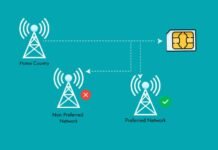In order to meet the needs of contemporary, high-performance applications, the transition from 4G to 5G brings about a major change in mobile network core architectures. The design, operational models, and capabilities of the 5G Next-Generation Core (5GC) and the 4G core network, known as the Evolved Packet Core (EPC), are very different.
Architecture and Design Paradigm
Network functionalities, including the Mobility Management Entity (MME), Serving Gateway (SGW), and Packet Gateway (PGW), are separate but closely linked parts of the 4G EPC’s centralized, monolithic architecture. The 5G core Solutions, on the other hand, uses a distributed, cloud-native architecture built on a Service-Based Architecture (SBA). More flexibility and scalability are made possible by the modularity, containerization, and service-based interfaces of 5GC’s network functions, including the Access and Mobility Function (AMF), Session Management Function (SMF), and User Plane Function (UPF).
Control and User Plane Separation
Control and User Plane Separation (CUPS) was partially introduced by 4G EPC, but 5G completely adopts this concept by clearly separating control plane and user plane activities. 5G’s separation allows user data handling and control signals to scale independently, which improves performance under high demand and makes better use of network resources.
Network Slicing and Customization
Network slicing, which enables operators to divide a single physical network into several virtual networks suited to various services or consumer demands, is a distinguishing characteristic of the 5G core. Since 4G EPC lacks this functionality, 5G is more appropriate for a variety of use cases, including massive machine-type communications (mMTC), improved mobile broadband (eMBB), and ultra-reliable low latency communications (URLLC).
Enhanced Protocols and Functions
New and improved network services that go beyond 4G capabilities are introduced by 5G core. The 4G Home Subscriber Server (HSS) is replaced by the Unified Data Management (UDM) function, which manages subscriber data, while an Authentication Server Function (AUSF) handles authentication. In order to provide more precise and dynamic policy enforcement, the Policy Control Function (PCF) develops the Policy and Charging Rules Function (PCRF) from 4G.
Flexibility and Agility
The cloud-native architecture of the 5G core allows for quick deployment and adaptable network function management. Containers are used to deploy functions as microservices, allowing for on-demand scaling, quicker upgrades, and continuous integration and delivery. Compared to the more static and hardware-bound 4G EPC, this agility is essential to support new business models and upcoming 5G applications.
Conclusion In conclusion, the shift from centralized, inflexible infrastructures to adaptable, service-oriented, and cloud-native designs is represented by the 4G Evolved Packet Core to the 5G Next-Generation Core. The 5G core is well-suited to satisfy the various, changing needs of the 5G era because of its modularity, support for network slicing, improved protocol features, and increased user-plane and control-plane separation. While 5G Core paves the way for ultra-low latency, huge connectivity, and intelligent network management necessary for future digital ecosystems, 4G EPC established the groundwork for high-speed mobile broadband. For operators and businesses hoping to fully utilize 5G technology and provide new types of services across industries, this change is essential.






